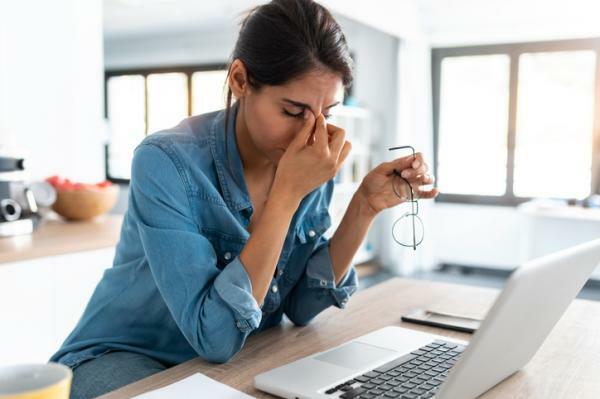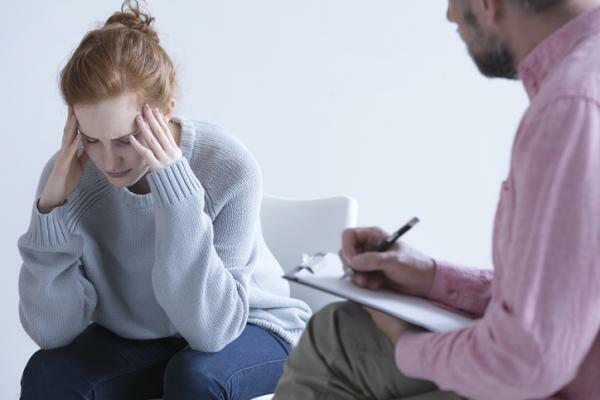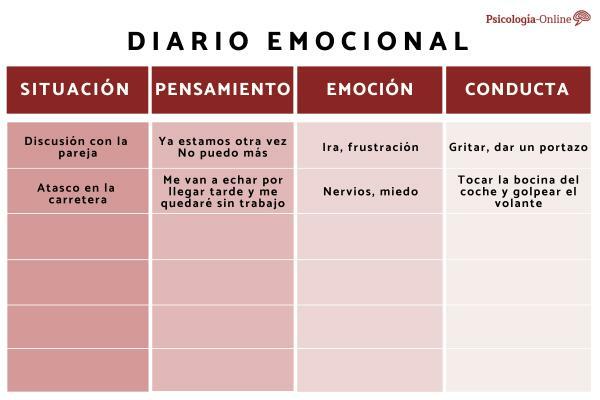
Adverse weather events have been present throughout our lives. Rains, snow, hail or electrical storms occur to a greater or lesser extent at certain times of the year and, therefore, we are very used to living with them.
Of all of them, rain is the phenomenon with which we have lived the most and although in many cases it is harmless, in others it can cause great material and even personal damage. For this reason, people can experience fear of rain, a fear that can become irrational and constitute a specific phobia called pluviofobia. We tell you more in this Psychology-Online article about pluviophobia: what is it, causes, symptoms and treatment.
Index
- What is pluviofobia
- Causes of pluviofobia
- Symptoms of pluviofobia
- Treatment of pluviofobia
What is pluviofobia.
Fear is an emotion that, like other emotions, have been and are necessary for human survival. The fear of the rain can make that, in the face of a strong storm in which the rain is torrential, people do not leave the house and / or are safe from the danger that may occur.
First, let's look at the definition of pluviofobia. The term pluviofobia refers to irrational fear of rain, that is, a disproportionate fear compared to actual danger. This last aspect is important if we take into account the different degrees of intensity that occur when it rains. In other words, it is not the same that anxious symptoms appear in the face of torrential rains (probably adaptive) than in the presence of a low intensity rain (probably maladaptive).
Within the DSM-5 diagnostic classifications (American Psychiatric Association)[1] and ICD-11 (World Health Organization)[2] this type of problem would be included in the category of specific phobias, within anxiety disorders.
As for the DSM-5, pluviofobia would belong to the specific phobias related to the natural environment. Following this diagnostic manual, we list below the characteristics for the diagnosis of specific phobias:
- The person feels a intense fear or anxiety of rain lasting at least six months.
- Rain is avoided (for example by staying at home) and in case of not being able to avoid it, the patient will resist it, experiencing great discomfort.
- The fear is disproportionate to the real danger.
- The fear of rain negatively interferes with the patient's daily life and / or generates great discomfort.
- This problem is not better explained in the context of other disorders (such as substance use).
Causes of pluviofobia.
The explanatory theories of specific phobias have been studied from different perspectives:
Biological explanations
- Evolutionary theories: This theory assumes the evolutionary predisposition for the development of phobias, which has contributed to the survival of the species. Let's imagine that, in the face of the rain, there are people who take shelter in a safe place and others who are not so afraid as to do so. If the rain is intense and / or dangerous, those who have shown the most fear will survive, since said fear has made them safe.
- There may also be a genetic predisposition regarding the development of phobias as suggested by studies with families.
Cognitive-behavioral explanations
- Phobias are acquired by classical conditioning (Rain is associated with aversive stimuli such as floods or dangerous situations) and is maintained for operant conditioning (If every time it rains the person avoids going outside or flees when it starts to rain, they will feel relief and the avoidance response will be reinforced).
- In addition to this, irrational thoughts or beliefs regarding the dangerousness of the rain may be present.
- On the other hand, irrational fear of rain can be acquired by observing this fear in other people, which is known as vicarious conditioning.
Biopsychosocial explanations
Finally, to explain the causes of pluviophobia, we find theories that integrate the findings of all the previous theories and that take into account both biological, psychological, and social factors to explain the development and maintenance of phobias specific. An example of this can be Barlow's theory (2002, seen in Sosa, C.D. and Capafóns, J.I., 2014)[3].
Symptoms of pluviofobia.
Symptoms that appear in the context of a specific phobia encompass, following Sosa, C.D. and Capafóns, J.I. (2014), three dimensions:
- In the first place, the physiological dimension, in which we find symptoms such as rapid heartbeat, nausea, diarrhea, or high blood pressure.
- Second, we find symptoms belonging to the cognitive dimension such as negative beliefs in relation to the rain and his own coping capacity.
- Third, within behavioral symptoms we find the rain avoidance (for example, as we indicated above, staying home) or running away from the rain (for example running home when it starts to rain).
Treatment of pluviofobia.
The treatment of choice for specific phobias is cognitive behavioral therapy. However, it can be complemented with drug therapy with anxiolytics if the case requires it.
Within cognitive-behavioral therapy we must use the exposure technique, which we can complement with cognitive therapy and psychoeducation.
Exposure technique
This technique consists of prolonged exposure of the patient to the feared stimulus, in our case the rain. This technique allows the anxiety response to decline during the presentation of the feared stimulus.
The problem with exposure to natural phenomena is that we cannot control their appearance, that is, it is not under our control whether it can rain or not. For this we can use exposure in imagination or we can help ourselves with virtual reality, taking into account that it cannot be avoid live exposure (our goal will always be to reduce the irrational fear response to real stimuli in alive).
In the following article, we delve deeper into the Exposure technique in psychology: what it is and characteristics.
Cognitive therapy
Cognitive techniques are aimed at working on irrational thoughts, beliefs and schemes related to the case that may be present. In this article we explain the irrational ideas discussion technique.
Psychoeducation
Psychoeducation aims to explain to the patient what it is to offer information to the patient about his problem, which can help improve his attitude towards treatment and increase his commitment.
This article is merely informative, in Psychology-Online we do not have the power to make a diagnosis or recommend a treatment. We invite you to go to a psychologist to treat your particular case.
If you want to read more articles similar to Pluviophobia: what is it, causes, symptoms and treatment, we recommend that you enter our category of Clinical psychology.
References
- American Psychiatric Association (2014). DSM-5. Reference guide to the diagnostic criteria of the DSM-5-Breviary. Madrid: Editorial Médica Panamericana.
- World Health Organization (WHO) (2018) International Classification of Diseases, 11th revision. Recovered from https://icd.who.int/es
- Sosa, C.D. and Capafóns, J.I. (2014) Specific phobia. In Caballo, V.E., Salazar, I.C. And Carrobles, J.A. (2014) Manual of Psychopathology and Psychological Disorders. Madrid. Pyramid.
Pluviophobia: what is it, causes, symptoms and treatment


